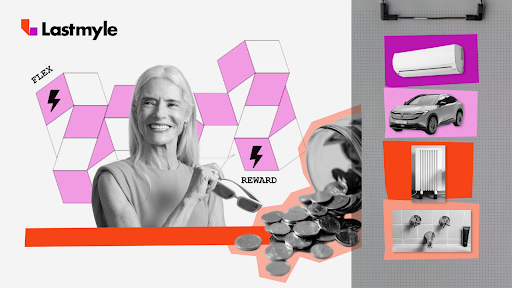The future is flexibility: Rewarding the untapped potential of everyday energy users
When we talk about the ‘future of energy’, headlines tend to go one of two ways: One, either new generation like solar farms and big batteries are (rightly) celebrated; or two, we panic about growing demand and looming shortages. Invariably, the solution put forward to the second is to “build more, generate more”. But this approach overlooks a great big missing piece: the grid.
The grid is the invisible hero of the energy transition.
New generation takes years to build, and even then, it won’t solve the problem if the infrastructure it depends on is struggling to carry today’s loads, let alone tomorrow’s.You can’t pump more power into a system that’s already overloaded.
Meanwhile, we’re electrifying transport, heating and industry, and our population is rising. With electricity demand expected to double by 2050 in Aotearoa, it’s clear we need a better way to manage what we already have and not just default to “more”.
And of course, along with sustainable sources of power generation and storage, with the power of distributed resources including rooftop solar and batteries, the way we manage energy can no longer be one-directional or one-dimensional.
It’s time to rethink not just how we generate power, but how and when we use it.
The untapped potential of everyday energy users
What if everyday homeowners, renters, schools, and businesses could contribute to a cleaner, more resilient grid through, and get rewarded for it? This is where energy flexibility - and energy flexibility that delivers a material reward for those contributing to the wider system - comes in.
At Lastmyle, we’re making smart energy tech that makes it possible to tap into the flexibility that already exists in our homes and businesses to support the grid, without asking people to change their behaviour or give up comfort. Best of all, they’re rewarded for it.
At scale, when we allow heaters, heap pumps, EV chargers and other appliances to shift when they draw energy from the grid, even by just a few seconds, we can collectively ease pressure on the grid, locally and nationally. Reducing reliance on fossil fuels, and deferring the cost of building new energy infrastructure. (Yes, those costs to build more poles and wires, which are making our energy bills go up and up).
Flexibility is one of the most overlooked levers we have to accelerate the clean energy transition, and make it more equitable. Until now, the energy system has treated consumers as end points. But we need a model where they’re active participants and rewarded for the value they bring.
We’ve already seen this working in practice through the roll out of Lastmyle’s hybrid software and hardware platform, Maestro. In Auckland, early adopters of Maestro are already being rewarded for their contribution to the grid. In New Plymouth, schools are exploring how timed heating loads could both reduce their bills and support energy reliability in their communities.
This isn’t just about efficiency. It’s about fairness and ensuring the benefits of a smarter grid aren’t reserved for only the big players - as they are today.
Energy flexibility should work for real life
Energy flexibility should work for real life, but well-meaning energy tech often falls short. Some smart home systems expect users to constantly monitor apps and make manual decisions. Others require expensive hardware or complicated installs that leave renters and lower-income households behind. Even time-of-use pricing by energy retailers, designed to encourage smarter consumption, can add complexity for consumers without clear reward - and cause unscheduled secondary peaks on the network.
To unlock energy flexibility at scale, we need solutions that fit into people’s lives, not disrupt them. That means designing technology that’s intuitive, almost invisible, and doesn’t require behaviour change or technical know-how. It needs to work for the school principal managing a tight budget, the time-poor renter, or the busy parent trying to keep the house warm in winter.
Building a cleaner, smarter, fairer grid
Energy flexibility is one of the pieces of the puzzle to solve the challenges facing energy today. It’s a powerful, scalable tool that shouldn’t be overlooked.
To meet climate goals, keep costs down, and support a grid fit for the future, we need to start treating flexibility as essential infrastructure, just like generation and transmission. We also need to make sure everyone can take part, not just the big players or those with the capital to invest in rooftop solar or home batteries. Flexibility could be the great equaliser of the energy transition, but only if we design it that way.
At Lastmyle, this is what drives us. We’re not just making energy smarter. We’re making it fairer. And that changes everything.

